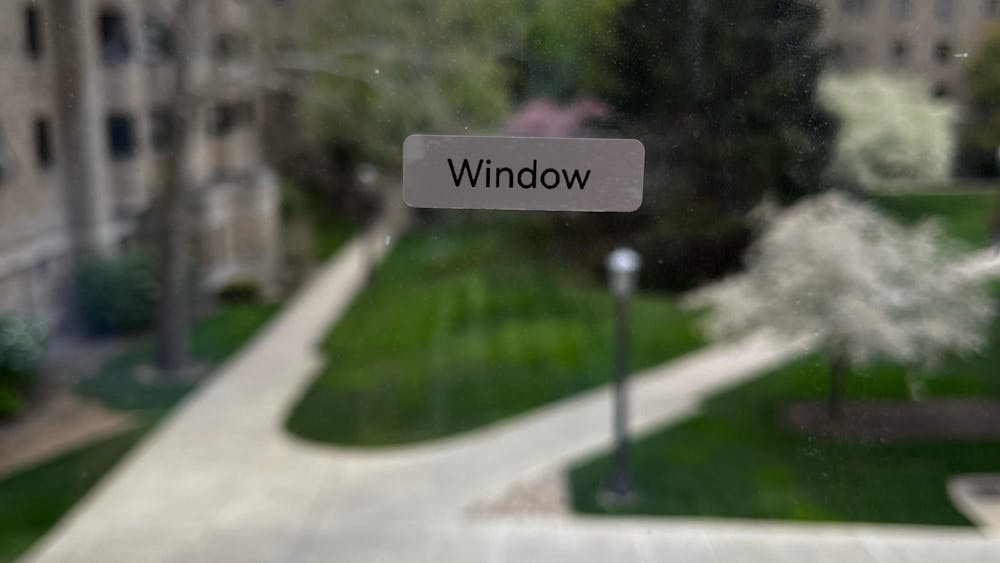As one of the organizers of the Hesburgh Library petition, I wish to clarify our platform concerning the Library's facilities. It seems most logical to shift the discourse away from simply remodeling part of the main Library toward an expansion of the entire Library system. I suggest this should be accomplished in four phases, in order of priority:
(1) We should construct a depository — a high-density, temperature-controlled warehouse that can hold millions of books. Notre Dame requires it for two reasons. In the short-term, we need a location where we can store materials without disrupting service whenever we renovate the Library. In the long-term, a depository is essential for expanding collections. Though it has long been known that the stacks are approaching capacity, we have tried to circumvent the problem by reducing book acquisition, even as our competitors are increasing theirs.

Next year, the University of Chicago will unveil a $42 million depository that can hold 3.5 million volumes, more than Notre Dame's entire collection. The British Library just opened a £26 million storage unit, while Harvard is planning further expansion of its depository. Top institutions understand that even with the growth of information technology, print holdings will always keep expanding.
A depository is thus a crucial investment, probably costing less than our new hockey arena ($50 million). Because it is a warehouse, it can be quickly constructed. It may not excite benefactors, but that hardly negates its absolute necessity: Even if we cannot find donors, its funding should come directly from the endowment.
(2) Our Library is often torn between the competing needs of group study and quiet research, which instead should have separate facilities. Collaborative study needs should be addressed by an information commons, which would be open to the entire University, though primarily serving undergraduates. It should be a state-of-the-art, 24-hour complex adjacent to the main Library that provides print materials, but specializes in digital resources.
In 2008, Loyola University Chicago opened a 67,000 square-foot facility connected to its main library, with 35 group study rooms, 216 computer workstations, technical support, library reference and an all-glass, lakefront façade. It cost $28 million, about what we spent on remodeling the Joyce Center. Consider that Loyola's donor base is comparatively small, while its endowment is one-seventeenth of ours.
Santa Clara University, with an endowment one-ninth of ours, recently invested $95 million in a new library complex, including a depository and a "learning commons" similar to Loyola's. While Notre Dame has postponed the Library's renovation every year since 2001 because of a lack of benefactor interest, Santa Clara garnered two donations of $20 million each, demonstrating what expanded library advancement can accomplish.
(3) An information commons should precede renovation of the entire Hesburgh Library, which will be the costliest step: Ohio State recently spent $120 million to renovate its main library. While remaining open to all, our modernized library should emphasize research and scholarship. To quote Professor Jeffrey's letter to The Observer ("Library will be fine under proper custodian," April 12), if it tries "to compete with Barnes & Noble in providing cute coffee bars and comfy couches, we are certain to lose."

Therefore, the first two floors should be dominated by large reading rooms with enforced quiet, decor that is conducive to research (i.e. no IKEA sofas or amoeba-shaped tables) with reference material and scholar-librarians at hand. On the first floor, there should be a consolidated area for computers, scanners and copy machines, together with a new acquisitions section and a dissertation office.
We should look to other research libraries for examples. The new British Library, built in 1997, has separate reading rooms for the humanities, social sciences, manuscripts, rare books and music. We can accommodate similar facilities only after the creation of the depository and the information commons. If we bypass these two steps, however, even the renovated Hesburgh Library will remain a cluttered mess, inadequate for either group study or quiet research.
(4) Notre Dame has sought to bridge the divide between academic and residential life with classrooms in the new halls. In the future, Notre Dame should also consider designing its residences so that they have small libraries. The presence of "house libraries" is a feature of other residential systems, as at Harvard or Oxford, giving students ready access to study areas and basic materials needed for classes.
These facilities are crucial to our stated goals of providing an unsurpassed undergraduate education and becoming a preeminent research university. These aspirations are not mutually exclusive, but they both require firm commitment to and substantial investment in an enhanced library system, which is the bedrock of virtually all great universities.
David Morris is a Ph.D. student in medieval history. He can be reached at dmorris1@nd.edu
The views expressed in this column are those of the author and not necessarily those of The Observer.












